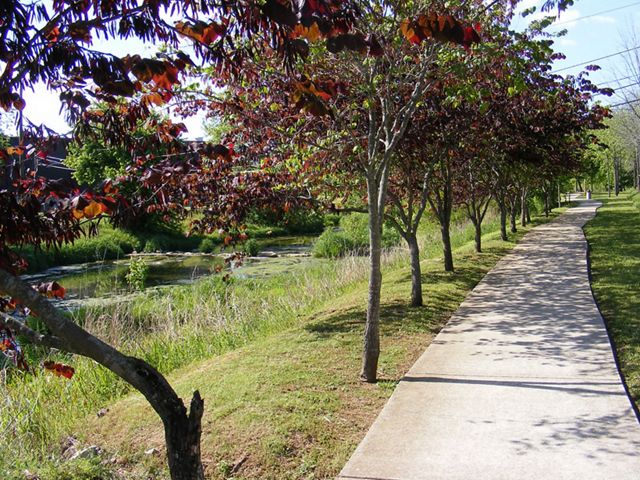Healthy Trees Healthy Tennessee
Healthy Trees, Healthy Tennessee. Tennessee's trees and forests are under attack from foreign invaders, but we can fight back with your help.

Early pest detection is critical to stopping outbreaks of tree disease. And most outbreaks begin in cities.
The Nature Conservancy’s Healthy Trees, Healthy Tennessee:
- Engages the public and tree care professionals in tree pest identification, tree health monitoring, and long term care of trees
- Raises awareness about the importance of trees and what people can do to keep trees healthy through education and outreach
Trees Are Essential to Our Lives
Trees capture rainfall and help control urban storm water runoff, provide shade, reduce excessive temperatures, and remove dust and pollutants from the air. Trees also provide a number of intangible benefits to people, such as year-round beauty, reduced stress and a greater sense of safety.
Protecting the Health of Our City Trees and Forests
Today many of North America’s trees are being destroyed by non-native insects and diseases. Early detection is critical to stopping outbreaks before they become more complicated and expensive to control. Most outbreaks of invasive pests begin in cities, which mean people living in cities have an important opportunity to protect the health of the nation’s trees and forests.
Tennessee’s foresters have had great success in eradicating pests when they have been discovered early. “Every year we catch spongy moths early and eradicate them before they become established in Tennessee,” says Heather Slayton of the Tennessee Division of Forestry. “Our most recent eradication was at Pattie Gap in Roane County where we found a small spongy moth population three years ago. We aerial sprayed it the following year and ground sprayed it in 2012. We also installed a series of very intense ground traps each year to capture any stragglers. As of August of 2013, Roane County is now considered free of these pests. This method of monitoring, detecting, and eradicating within a year or two has been done successfully in Tennessee for the spongy moth since the 1970s.”
Tennessee’s trees are vulnerable to several devastating tree pests and pathogens including: Asian Long-Horned Beetle, Emerald Ash Borer, Hemlock Woolly Adelgid, Thousand Canker Disease, Sudden Oak Death, and Spongy Moth.
When camping, remember: Don't Move Firewood! That means, don't transport firewood from your home to your campsite. You might accidentally transport tree pests into a forest. www.dontmovefirewood.org
Training and Resources
The Conservancy is developing information and tools to improve tree pest identification and reporting, tree stewardship and monitoring the health of city trees. Materials include:
Pest Identification Videos
- Asian Long-Horned Beetle (ALB)
- Emerald Ash Borer (EAB)
- Hemlock Woolly Adelgid (HWA)
- Spongy Moth
- Winter Moth
If Trees Could Sing
- Videos with music artists talking about the benefits of trees and how to take care of them.
Community Science tools and phone apps can help identify and report outbreaks of tree pests:
- Southeast Early Detection Network
- Purdue Tree Doctor
- University of Tennessee - Soil, Plant & Pest Center - Facebook page
Report a Pest
When you identify tree damage or notice an unusual tree pest, take a picture and note the location. Report your findings to officials in Tennessee by calling (615) 837-5520 or emailing Protect.TNForests@tn.gov. You can also report online at: http://protecttnforests.org
Get Involved
Become a Pest Detective. Be observant and look for unusual changes in your neighborhood trees. Trees usually show symptoms when they are under attack (branches dying, green leaves turning yellow or brown in spring and summer, insects, and holes in the bark). The earlier we catch a pest infestation, the easier it is to limit or even prevent the widespread damage caused by these pests.
